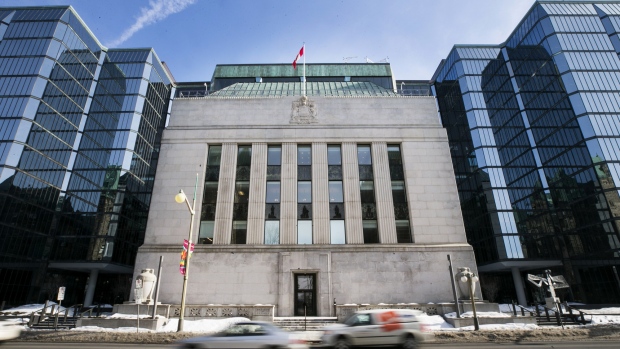May 30, 2018
'Get ready for a July rate hike': BoC drops cautious tone, holds rates
, Bloomberg News

Canada’s central bank left interest rates on hold for a third straight decision Wednesday, but gave an upbeat assessment of the economy and removed some of its more cautious language, potentially indicating a greater willingness to return to a hiking cycle.
In its announcement, which kept the benchmark rate unchanged at 1.25 per cent, the central bank said continued growth in the economy “further” reinforces the view that higher interest rates will be warranted.
Crucially, policy makers removed language that had appeared in the five most recent statements about remaining cautious on any future policy adjustments, replacing it with a pledge to take a “gradual approach.” They also dropped another line about the need to keep some “monetary accommodation” in place over time. Also absent was any reference to labour slack.
“Overall, developments since April further reinforce Governing Council’s view that higher interest rates will be warranted to keep inflation near target,” the central bank said. This is a reiteration of past statements, but the latest version omits a reference to “over time.”
“Governing Council will take a gradual approach to policy adjustments, guided by incoming data,” it said.
“Get ready for a July rate hike,” Frances Donald, senior economist with Manulife Asset Management told BNN Bloomberg. “That’s pretty strong language from a central bank that doesn’t tend to tell us what they’re going to do next. Poloz is not a fan of forward guidance.”
“But that removal of that word ‘cautious,’ sounding more upbeat, to me this is saying ‘we’re not moving now, we’re going to keep our eye on some of the data, but we are leaving the door very open. In fact we are probably pushing it right through to July,’” she added.
All but one of the 25 economists in a Bloomberg survey predicted the bank would hold steady.
CONFIDENCE
The statement seems to reveal more confidence by policy makers in the resiliency of the expansion and will probably reinforce expectations of an increase as early as the next meeting in July.
The Bank of Canada has raised interest rates three times since the middle of last year amid signs the economy is running up against capacity, but has been in a wait-and-see mode since January due to a number of uncertainties -- from inconclusive Nafta negotiations to the housing market.
These will determine the pace of future hikes and how high rates will go, with the central bank estimating its neutral rate is 3 per cent.
Before today’s statement, investors were pricing in two more rate increases this year -- in July and December.
Wednesday’s central bank statement gave a nod to “ongoing uncertainty” in trade policy that it said is dampening global business investment, while noting recent “stresses” on emerging market economies. At the same time, it said global economic activity remained “broadly on track” with expectations.
RATE SENSITIVITY
Policy makers meanwhile will continue to “assess the economy’s sensitivity to interest rate movements.” Canada’s very large debt overhang has been seen limiting the central bank’s ability to return interest rates to its neutral rate. This is one reason -- economists speculated -- for why the central bank had been saying in its statements that continued monetary policy accommodation would continue to be needed over time. That reference now has been dropped.
On inflation, the central bank acknowledged that prices are accelerating faster than it had predicted in April because of gasoline prices, but its core measures that exclude energy prices are near 2 per cent, “consistent with an economy operating close to potential.” It reiterated it would look through the transitory impact of gasoline prices.
On the economy, the central bank said recent economic data reinforces the central bank’s April outlook for 2 per cent growth in the first half of 2018, even though the first quarter appears to be stronger than expected. Exports have been stronger than expected, and a pick-up in imports of machinery and equipment suggest a recovery in investment, it said.
While acknowledging weakness in housing resale activity, the central bank said it expects “solid” labor income growth will trigger a rebound in housing and fuel strong consumption growth.
--With files from BNN Bloomberg and assistance from Erik Hertzberg.

